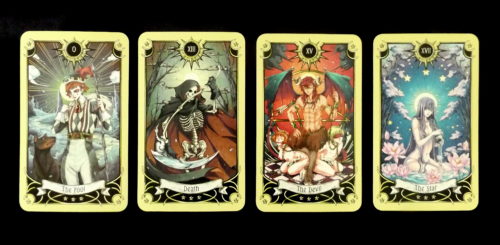Have you ever wondered about the origins and symbolism behind tarot cards? In this article, we will explore the fascinating connection between mythology and tarot cards. Discover how ancient stories and myths have influenced the imagery and meaning of these mystical cards, providing insight into our past, present, and future. Journey into the world of tarot as we unravel the mythical threads that weave through each card, revealing the rich tapestry of human history and belief systems. Get ready to embark on a captivating exploration of what mythology truly lies within the realm of tarot cards. Tarot cards are more than just a deck of cards used for fortune-telling or divination; they are also steeped in rich mythological symbolism. These ancient cards have a long history and have evolved over the centuries, incorporating various mythological influences from different cultures. From Greek mythology to Egyptian mythology to Norse mythology and beyond, tarot cards have been influenced by a wide range of mythological themes. Understanding these mythological influences can deepen our understanding of the cards and enhance our interpretations during tarot readings.
Origin of Tarot Cards
The exact origin of tarot cards is still a topic of debate among scholars. However, most agree that they originated in Europe during the 14th century. The early tarot decks were not initially intended for divination but were primarily used for playing card games. Over time, however, the cards began to take on a more mystical significance, and their use for fortune-telling and spiritual guidance became more prominent.
Early Tarot Card Decks
The early tarot card decks consisted of the Major Arcana and the Minor Arcana. The Major Arcana, also known as the Trumps, was comprised of 22 cards, each representing a significant archetype or theme. The Minor Arcana consisted of four suits – Wands, Cups, Swords, and Pentacles – each with ten numbered cards and four court cards. These early decks lacked the intricate symbolism that we now associate with tarot cards but laid the foundation for the evolution of the cards in the following centuries.
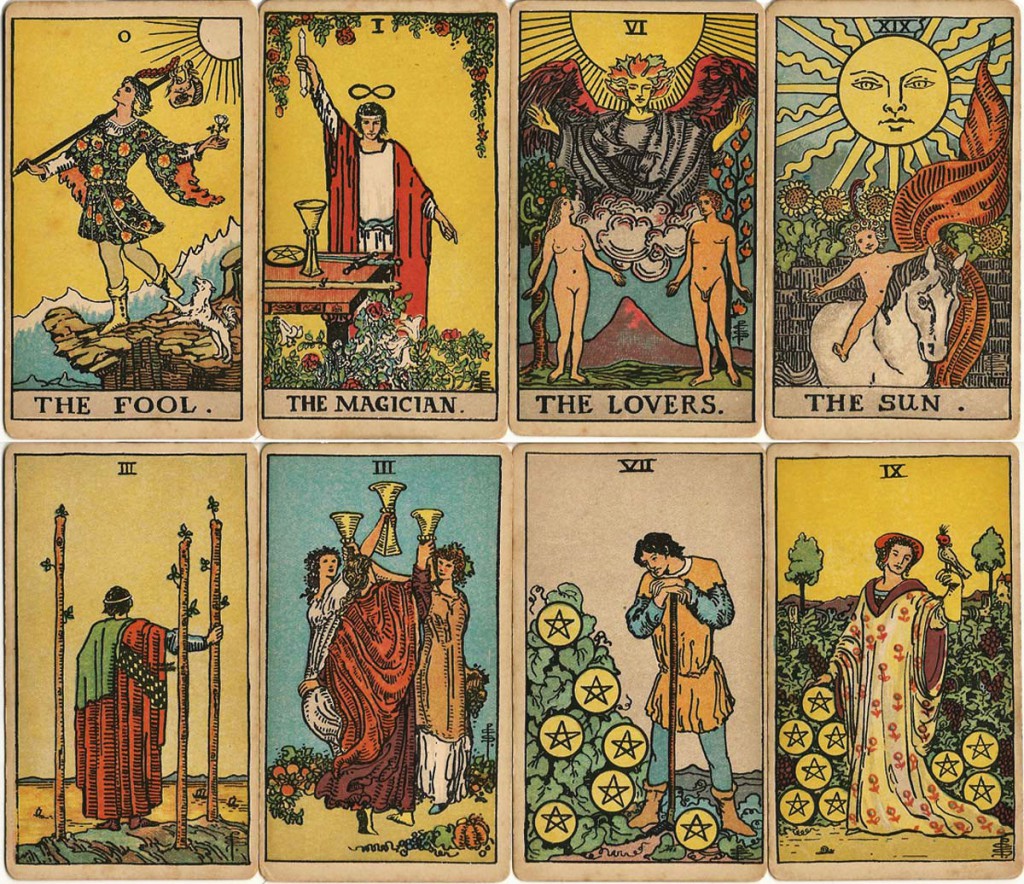
Evolution of Tarot Cards
As tarot cards gained popularity, they started to incorporate more symbolic imagery, drawing inspiration from mythology and other esoteric systems. Over time, illustrations on the cards became more intricate and detailed, capturing the essence of the archetypes they represented. The cards began to encompass various mythological themes from different cultures, making tarot a cross-cultural divination tool that spoke to people from all walks of life.
Major Arcana and Mythology
The Major Arcana, with its 22 powerful cards, holds a prominent place in tarot readings. Each card represents a significant archetype and conveys deep symbolic meanings. Many of these archetypes in the Major Arcana draw inspiration from mythology. The Fool, for example, is often associated with Hermes or Mercury, the trickster gods known for their unpredictability and willingness to take risks. The Empress represents the nurturing and abundant qualities of Demeter or Ceres, goddesses connected with fertility and the cycles of nature.
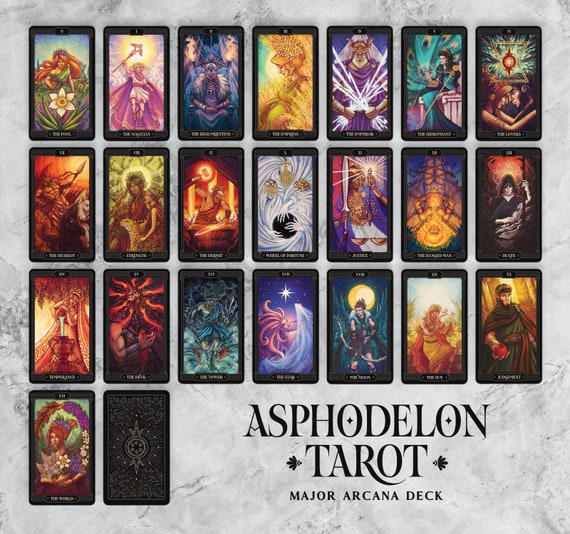
Incorporation of Gods and Goddesses
Throughout the history of tarot, gods and goddesses from various mythologies have been incorporated into the card designs. These deities bring their unique qualities and symbolism to the cards, adding depth and complexity to their interpretations. For instance, the Emperor is often associated with Zeus or Jupiter, symbolizing authority, leadership, and the power of reason. By embracing mythological figures, tarot cards offer a connection to ancient wisdom and a bridge between the spiritual and mundane realms.
Symbolism from Different Mythologies
Tarot cards are not limited to the mythologies of one culture; they draw inspiration from a multitude of mythological traditions. The symbolism on tarot cards can be found in Greek mythology, Egyptian mythology, Norse mythology, Celtic mythology, Hindu mythology, Chinese mythology, and beyond. Each culture brings its own unique perspective and symbolism, providing a diverse range of interpretations and layers of meaning within the cards.
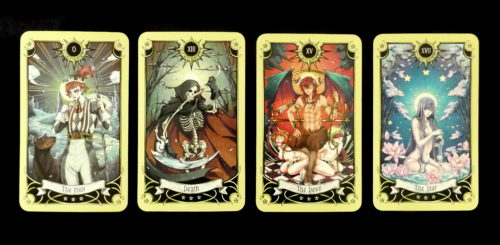
Tarot Cards and Greek Mythology
Greek mythology has had a significant influence on tarot cards. Many of the Major Arcana cards find their mythological counterparts in Greek gods and goddesses. The Fool card, representing new beginnings and unpredictability, is often associated with Hermes/Mercury, the messenger of the gods and the patron of travelers. Both share the qualities of quick thinking, adaptability, and the ability to navigate through unexpected situations.
The Empress card, embodying abundance, fertility, and nurturing, has connections to Demeter/Ceres. In Greek mythology, Demeter is associated with the harvest, and her role as a mother figure aligns with the nurturing qualities of the Empress card. The Emperor card, representing authority and leadership, draws inspiration from Zeus/Jupiter, the king of the gods known for his sovereignty and ruling power.
Tarot Cards and Egyptian Mythology
Egyptian mythology has also influenced the symbolism in tarot cards. The High Priestess card, symbolizing intuition and hidden knowledge, finds its mythological connection in Isis, the Egyptian goddess of magic and wisdom. Isis represents the mysteries of the divine feminine and the power of intuition, aspects that are reflected in the High Priestess card.
The Hierophant card, representing spirituality and tradition, can be linked to Thoth, the Egyptian god of knowledge and writing. Thoth was considered the divine scribe and often depicted as a wise teacher, conveying wisdom to humanity. These qualities are echoed in the Hierophant card, which encourages seekers to explore their spiritual path and seek guidance from established traditions.
The Sun card, symbolizing joy and vitality, draws inspiration from Ra, the ancient Egyptian sun god. Ra is associated with life, light, and warmth, qualities which are reflected in the Sun card’s depiction of radiant energy and blissful abundance.
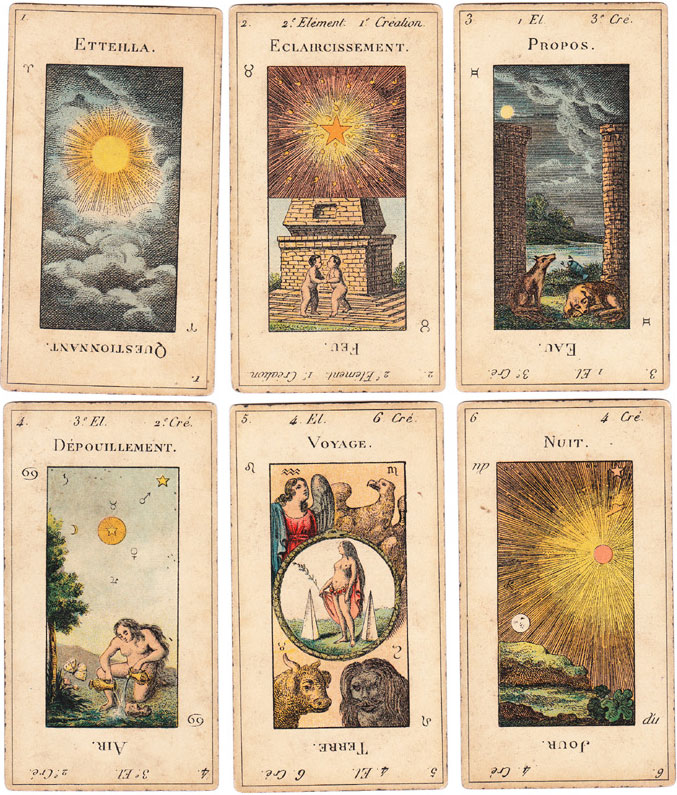
Tarot Cards and Norse Mythology
Norse mythology also plays a significant role in the mythological influences on tarot cards. The Lovers card, representing love and choices, can be associated with Freyja and Freyr, the twin deities of love and fertility. Their story reflects themes of romantic love, desire, and the complications that arise when choices must be made.
The Tower card, symbolizing sudden change and upheaval, finds its connection to the cataclysmic event known as Ragnarök in Norse mythology. Ragnarök represents a final battle that leads to the destruction and subsequent rebirth of the world. The Tower card’s depiction of a crumbling tower and the subsequent transformation alludes to the chaos and potential for renewal.
The World card, representing completion and fulfillment, draws its inspiration from Yggdrasil, the World Tree in Norse mythology. Yggdrasil connects the nine realms of the Norse cosmos and represents the unity and interconnectedness of all things. The World card embodies a sense of wholeness and the culmination of a journey, reflecting the mythological significance of Yggdrasil.
Other Mythological Themes in Tarot Cards
While Greek, Egyptian, and Norse mythologies have a significant influence on tarot cards, other mythological traditions have also made their mark. Celtic mythology offers a wealth of symbolism that can be seen in various tarot decks, often drawing upon the rich folklore and spiritual traditions of the Celtic people. Hindu mythology, with its pantheon of gods and goddesses, provides a rich source of inspiration for tarot card designs, infusing them with Hindu symbolism and imagery. Chinese mythology, with its ancient tales and mythical creatures, has also found its way into tarot cards, enriching the diversity of mythological themes present.
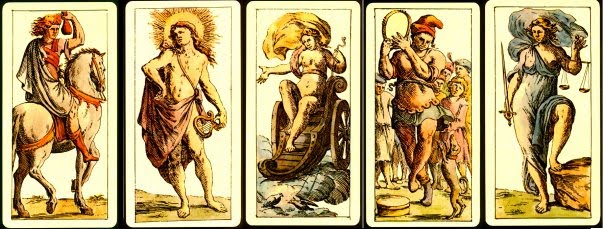
Interpreting Mythological Symbolism in Tarot Readings
Understanding the mythological symbolism in tarot cards can greatly enhance our interpretations during readings. By delving into the stories and archetypes of different mythologies, we gain a deeper understanding of the cards and their meanings. Here are a few key tips to help interpret mythological symbolism in tarot readings:
Understanding Archetypes
Archetypes, which are universal symbols and patterns, play a crucial role in tarot readings. Exploring the mythological origins and associations of these archetypes can shed light on their deeper meanings. For example, the Fool archetype, often associated with Hermes or Mercury, encourages us to embrace curiosity, take risks, and trust in the journey ahead. By understanding these mythological associations, we can better grasp the Fool’s message of embracing the unknown.
Translating Mythological Symbols
Each mythological tradition has its own unique symbols and motifs. When encountering these symbols in tarot cards, it can be helpful to look into their mythological context and consider their meanings within that specific culture. For instance, the presence of a lotus flower in a tarot card may draw upon its symbolism of purity and enlightenment from Hindu mythology.
Unveiling Deep Meanings
Mythological symbolism can add layers of depth and complexity to tarot readings. By exploring the stories and traditions associated with different mythological figures, we can uncover deeper insights and connections within the cards. For example, the Empress card’s association with Demeter/Ceres brings forth themes of nurturing, abundance, and the cycles of nature. Understanding these mythological connections can provide valuable insights into the Empress card’s meaning within a reading.
Comparisons to Other Divination Systems
While tarot cards are a powerful divination tool on their own, they can also be compared and combined with other systems of divination. Exploring these comparisons can offer fresh perspectives and insights into our readings.
Astrology and Tarot Cards
Astrology and tarot cards share common themes and archetypes, making them natural companions in divination. Both systems connect to the cosmic energies and offer guidance and insight into different aspects of life. Combining astrology and tarot can provide a more holistic understanding of a situation and help us navigate life’s challenges more effectively.
Runes and Tarot Cards
Runes, an ancient Norse divination system, can also be used alongside tarot cards to enhance readings. Runes offer a direct and concise form of guidance, while tarot cards provide deeper insights and symbolism. By combining the two, we can gain a multidimensional perspective and a comprehensive understanding of the messages we receive.
I Ching and Tarot Cards
The I Ching, an ancient Chinese divination system, offers wisdom and guidance through the interpretation of hexagrams. When used alongside tarot cards, the I Ching can add another layer of insight and help us access the wisdom of the ancient Chinese traditions. The dual approach of tarot and I Ching can provide nuanced guidance for complex situations.
Mythological Tarot Decks
Given the immense influence of mythology on tarot cards, it is no surprise that many tarot decks focus specifically on mythological themes. These mythological tarot decks offer unique interpretations of the cards, infusing them with the stories, symbols, and archetypes of different mythologies.
Popular Mythological Tarot Deck Examples
Some popular mythological tarot decks include the Mythic Tarot, which draws upon Greek mythology, the Egyptian Tarot, which explores the symbolism of ancient Egypt, and the Norse Tarot, which delves into the rich mythological traditions of the Norse people. These decks present a diverse range of mythological themes, allowing readers to connect with the specific mythological traditions that resonate with them.
Creating Mythological Tarot Decks
Creating a mythological tarot deck is a complex yet rewarding endeavor. It requires a deep understanding of the mythologies being incorporated, as well as artistic skill to bring the symbolism to life. Artists and tarot enthusiasts who embark on this journey must carefully study the mythological themes they wish to represent and consider how to best capture their essence on each card.
Collecting Mythological Tarot Decks
For tarot enthusiasts and collectors, mythological tarot decks offer a fascinating and immersive experience. Collecting these decks allows one to explore the vast world of mythology through the lens of tarot, discovering new perspectives and connections between different cultures and traditions. Each deck brings its own unique interpretation and artistic style, making for a diverse and visually stunning collection.
The Popularity and Influence of Mythological Tarot
Mythological tarot has experienced a resurgence in modern times, finding its way into popular culture and influencing spiritual practices. The enduring appeal of mythologies from around the world, combined with the wisdom and archetypes found in tarot cards, has created a potent fusion of spirituality and storytelling.
Tarot’s Resurgence in Modern Times
In recent years, there has been a renewed interest in tarot and a growing appreciation for its mythological connections. People from various backgrounds are drawn to the timeless wisdom and universal themes depicted in the cards. This renewed popularity has led to the creation of new mythological tarot decks, featuring stunning artwork and incorporating more diverse mythological influences.
Mythological Tarot in Pop Culture
Mythological tarot has also found its way into popular culture, appearing in books, movies, and television shows. The allure of tarot’s mystical and mythological elements adds depth and intrigue to fictional stories, captivating audiences and encouraging a broader exploration of these ancient themes.
Impact on Spiritual Practices
Mythological tarot has also had a significant impact on spiritual practices, offering a unique avenue for personal growth, introspection, and connection to the divine. By integrating mythological symbolism into tarot readings and meditative practices, individuals are able to access the collective wisdom of ancient cultures, allowing for a deeper understanding of themselves and the world around them.
In conclusion, the history of tarot cards is intimately intertwined with mythology. From their origins in Europe to their incorporation of mythological symbolism from various cultures, tarot cards have served as a bridge between the spiritual and mundane realms. Greek, Egyptian, Norse, Celtic, Hindu, and Chinese mythologies have all contributed to the rich tapestry of symbolism found within the cards. Understanding these mythological influences allows us to unlock deeper meanings during tarot readings and gain a greater appreciation for the power and wisdom that tarot cards embody. Whether creating, collecting, or interpreting mythological tarot decks, these cards offer a powerful tool for personal growth, divination, and exploration of the mythic realms.
